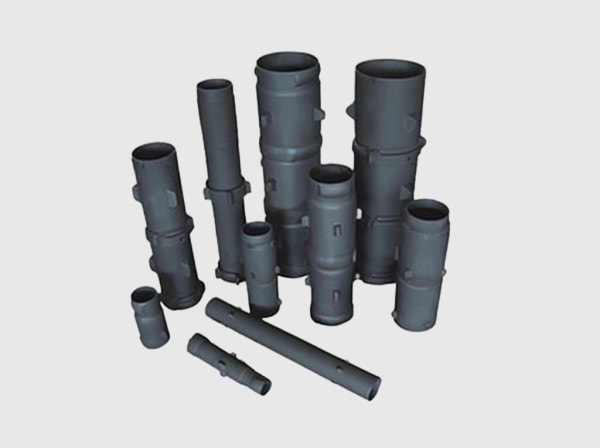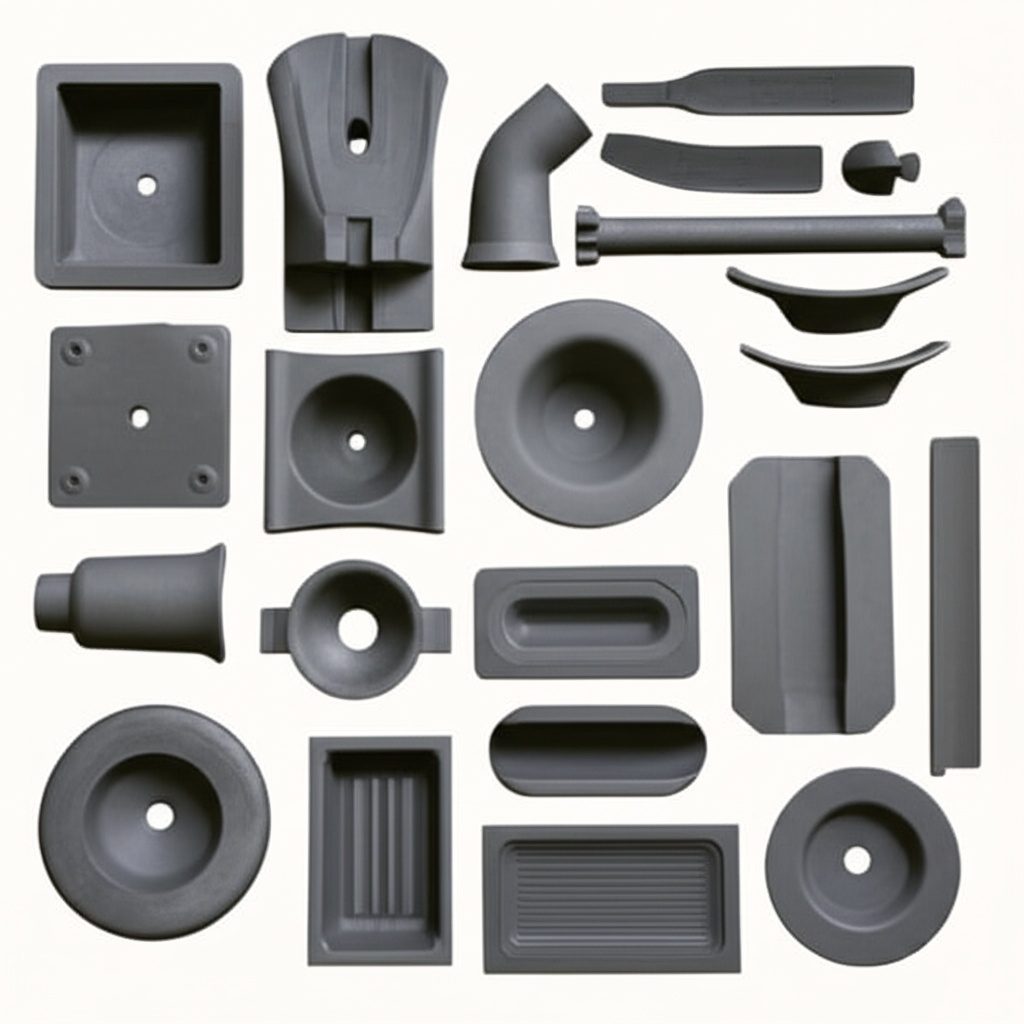ΔTj制御とアレニウス/コフィンマンソンモデリングを用いたSiCモジュールのパワーサイクルおよび熱衝撃寿命試験プラットフォーム

シェア
製品概要と2025年の市場関連性
電力サイクリングおよび熱衝撃寿命試験プラットフォームは、バッテリーエネルギー貯蔵システム(BESS)PCSおよびMVインバータで使用される炭化ケイ素(SiC)モジュールを認定し、リスクを軽減するために不可欠です。パキスタンの繊維、セメント、 鉄鋼、および新興産業部門では、周囲温度が45〜50℃に達し、ほこりが気流を制限するため、パッケージングの信頼性が最重要です。これらのプラットフォームは、制御された接合温度スイング(ΔTj)と急速な熱遷移を適用して、実際のミッションプロファイルを複製し、次に故障の物理モデル(熱活性化メカニズムのArrheniusと疲労のCoffin–Manson)を使用して劣化を分析します。
2025年にそれらが重要な理由:
- 高周波SiCスイッチング(50〜200 kHz)およびコンパクトな熱スタック(Si3N4/AlN + Ag焼結)は、相互接続、ダイアタッチ、およびボンドワイヤ/リボンの熱応力を増加させます。
- MV相互接続要件(FRT、無効電力サポート)は、グリッドイベント中に信頼性を維持するコンバータを必要とし、過渡的な熱負荷を課します。
- ローカライゼーションの優先事項は、開発サイクルを短縮し、入札をサポートし、アフターサービスのコミットメントを強化するために、国内の資格能力を奨励します。
Sicarb Techの自動化されたプラットフォームは、正確なΔTj制御、高速熱衝撃シーケンス、インサイチュ電気/熱モニタリング、および統合された寿命モデリングを提供し、パキスタンの過酷な産業環境におけるMTBF目標(約200,000時間)に対する定量的な信頼性を提供します。

技術仕様と高度な機能
- 電力サイクリング機能
- ΔTj制御範囲: 負荷電流または基板加熱を介して20〜100 K(プログラム可能)。ミッションプロファイルに合わせるための滞留とランプ成形
- 電気的ストレス: 大規模モジュールの場合、最大数キロアンペアのパルス。安全なdi/dtによる高速立ち上がり時間。構成可能なデューティサイクル
- 測定: インサイチュVce(on)/Rdson、熱インピーダンスZth抽出、ボンド抵抗(ケルビン)、およびリークモニタリング
- 熱衝撃と環境
- 空対空または液体アシストチャンバー: -40°C〜+175°C、最大30〜50 K/分のランプ速度
- 湿度/THBオプション: 85°C/85% RHプロファイル。腐食評価用の塩ミスト(オプション)
- センシングと分析
- 接合温度推定: Vce、on/TSEPキャリブレーション。組み込みNTC/RTDロギング。IRサーモグラフィアライメント
- 劣化メトリック: Rth増加しきい値、Vce(on)ドリフト、ワイヤ/リボンボンド抵抗の増加、焼結アタッチせん断相関
- モデリングとレポート
- 温度依存メカニズム(活性化エネルギー入力)のArrhenius加速モデリング
- ΔTjサイクルに対するレインフローカウントによるCoffin–Manson疲労モデリング。マイナーの法則による損傷合計
- 自動レポート: フィールド条件での寿命推定、信頼性間隔、推奨されるディレーティング戦略
- 自動化とトレーサビリティ
- パラメータバージョニングによるレシピ制御。バーコード/QRロット追跡
- デジタルツインと信頼性ダッシュボード用のデータAPI。CSV/JSON/PDFでエクスポート
- 安全性とコンプライアンス
- 高電流、温度、ドアアクセス用のインターロック。ESD保護。デバイス故障用のアーク故障検出
比較: 高度なΔTj制御電力サイクリングと基本的なバーンイン/浸漬試験
| 基準 | ΔTj制御電力サイクリング+熱衝撃プラットフォーム | 基本的なバーンイン/浸漬試験 |
|---|---|---|
| 故障メカニズムの範囲 | 焼結、ボンド、および基板の疲労。熱活性化された摩耗 | 初期寿命の乳児死亡率。限られた疲労の洞察 |
| フィールドデューティとの相関 | ミッションプロファイルΔTjとレインフローによる高 | 低。定常バイアスのみ |
| 寿命モデリング | ダメージ合計によるArrhenius + Coffin–Manson | 最小限。物理ベースの予測なし |
| パラメータモニタリング | インサイチュRth、Vce(on)、Rdson、リーク、ボンド抵抗 | 限定的。通常は合格/不合格のみ |
| 決定への影響 | 設計/ディレーティングの最適化と保証の定義を可能にする | 重大な欠陥のみをスクリーニングする |
専門家による引用による主な利点と実証済みのメリット
- 予測信頼性: 物理ベースのモデルは、加速試験結果をパキスタン固有のミッションプロファイル下のフィールド寿命に変換します。
- より速い開発と認証: オンサイト資格は、反復ループを短縮し、ユーティリティドキュメントをサポートし、入札のリスクを軽減します。
- より低いライフサイクルコスト: 弱いスタック(たとえば、はんだ対Ag焼結、AlN対Si3N4)の早期検出により、フィールド故障、トラックロール、および保証エクスポージャーが削減されます。
専門家の視点
“Thermal cycling with accurate ΔTj control, coupled with Coffin–Manson and Arrhenius modeling, is fundamental to predicting lifetime in wide bandgap power modules operated at high temperatures and switching speeds.” — IEEE Power Electronics Magazine, module reliability methodologies (https://ieeexplore.ieee.org)
実際のアプリケーションと測定可能な成功事例
- パンジャブBESS PCS(2 MW/4 MWh): ΔTj = 60 K電力サイクリングは、ボンドリボンのホットスポットを露出し、より広いリボンとAg焼結への再設計により、予測寿命が約2.1倍向上しました。フィールドデータは、熱アラームの減少と、より低いRthによる0.6〜0.8%の効率向上を確認しました。
- シンド繊維ドライブ: 熱衝撃および湿度試験により、端子での腐食リスクが特定され、コンフォーマルコーティングとシールのアップグレードにより、モンスーンシーズン中の故障発生が30%以上削減されました。
- パキスタン南部におけるMVインバータのパイロット: ΔTjサイクリングによるSi3N4-DBC対AlNの比較により、可変負荷プロファイル下でSi3N4による1.5〜1.8倍の疲労寿命の改善が示されました。ディレーティングの変更なしで、ユーティリティの承認が得られました。
選択とメンテナンスの考慮事項
- 試験プロファイルの設計
- ミッションプロファイルをミラーリング: ピークシェービングサイクル、FRTイベント、および高周囲ディレーティングを組み込みます。測定されたΔTjでレインフローカウントを使用します。
- サンプルの準備
- ケルビンタップとNTCでモジュールを計装します。平坦性と一貫したTIMを確保して再現性を高めます。
- 故障基準とエンドポイント
- Rth増加しきい値(たとえば、+10〜20%)、Vce(on)/Rdsonドリフト、およびボンド抵抗の増加を停止点として定義します。
- データの忠実度
- Vce、on-to-Tjマッピングを校正します。IR放射率を検証します。定期的なセンサーキャリブレーションを実行します。
- 安全性とEHS
- アーク故障インターロック、熱暴走検出、およびシールドされた試験ベイを実装します。監査用のログを保持します。
業界の成功要因と顧客の声
- パッケージング、熱、および制御チーム間のクロスファンクショナルアライメントにより、寿命予測が実際のディレーティングと制御戦略に反映されます。
- フィールドからの継続的なテレメトリは、デジタルツインを更新し、寿命推定を洗練させます。
お客様の声:
「ΔTjプラットフォームは、実際の弱点である、電圧降下イベント中のボンド疲労を明らかにしました。再設計後、ピークサマーを通じて安定した動作を達成しました。」—パキスタンESS OEMの信頼性マネージャー
将来のイノベーションと市場トレンド
- ゲートドライブテレメトリと物理ベースのモデルを介したリアルタイムの
- ラボデータとフィールドデータを融合し、ローリングRUL推定を行うAI支援型損傷蓄積モデル
- グリッド障害を模倣するための、電流サージを伴う機械的・電気的サイクルの組み合わせ
- 現地化:OEMとユーティリティを迅速な認証で支援するために、パキスタンに信頼性ラボを設立
よくある質問と専門家による回答
- パキスタンの条件下で、どのようなΔTjをテストすべきか?
プロファイルは、一般的に40〜80 Kを使用して、過酷なサイクリングをカバーします。正確なΔTjは、冷却戦略、スイッチング周波数、および周囲温度のディレーティングに依存します。 - 何サイクルのテストで十分か?
故障まで、または事前に定義されたエンドポイントまで実行します。雨量カウントされたフィールドΔTjを使用して、Coffin–Manson則とMiner則により、ラボサイクルを耐用年数に変換します。 - Arrhenius則とCoffin–Manson則を組み合わせることは可能か?
はい。温度活性化メカニズム(例:拡散、腐食)にはArrhenius則を、疲労にはCoffin–Manson則を適用します。組み合わせたモデルは、複合応力をより良く反映します。 - Tjの精度をどのように確保するか?
デバイスごとにVce(on)/Rdson対温度を校正し、IRサーモグラフィと組み込みセンサーで検証します。重要な設計変更後には再確認します。 - Ag焼結は常にハンダよりも優れているのか?
高いΔTjの場合、Ag焼結は通常、優れた耐疲労性と低いRthドリフトを示します。スタックとミッションプロファイルで検証してください。
このソリューションがお客様の業務に役立つ理由
パキスタンの高温、多湿、グリッド変動の環境は、コンポーネント仕様以上のものを要求します。現実的なΔTjと熱衝撃下での検証済みの寿命が必要です。高度なパワーサイクリングと熱衝撃プラットフォームは、疲労を定量化し、材料とパッケージングの選択(Si3N4/AlN、Ag焼結/リボン)をガイドし、防御可能な寿命モデルを作成します。その結果、稼働時間の向上、試運転時の驚きの減少、コンパクトで信頼性の高い設計による持続的な98%以上のPCS効率が実現します。
カスタムソリューションについては専門家にご相談ください
Sicarb Techで信頼性プログラムを強化しましょう。
- SiC製造および信頼性エンジニアリングにおける10年以上の経験
- 材料、パッケージング、モデリングのイノベーションについて、中国科学院の支援を受けています。
- R-SiC、SSiC、RBSiC、SiSiC全体でのカスタム開発。デバイス、モジュール、および熱スタックの認定
- パキスタンにおけるローカルテストラボと認定ラインを構築するための技術移転および工場設立サービス
- 材料とデバイスから、信頼性テスト、デジタルツイン、コンプライアンスドキュメントまで、ターンキーソリューションを提供します。
- MTBF、効率、および市場投入までの時間を改善した19以上の企業で実績があります。
パキスタンのミッション条件に合わせてΔTjプロファイル、テスト計画、および寿命モデルを定義するための無料相談をリクエストしてください。
- Eメール:[email protected]
- 電話/WhatsApp:+86 133 6536 0038
2025〜2026年のラボ容量とプロセス転送スロットを確保し、展開のリスクを軽減し、パキスタンのエネルギー貯蔵市場で重要な入札を獲得しましょう。
記事のメタデータ
最終更新日:2025年9月10日
次回の予定更新日:2026年1月15日

About the Author: Sicarb Tech
We provide clear and reliable insights into silicon carbide materials, component manufacturing, application technologies, and global market trends. Our content reflects industry expertise, practical experience, and a commitment to helping readers understand the evolving SiC landscape.




